
Introduction At registration, each user is assigned a pictogram - four individual glyphs which form a deer's unique "name". At the surface, this seems pretty simple, but over the years the community has collected more information, and even created some of its own lore regarding a deer's name. From the storytelling provided by the multiple generations within the pictograms to the hidden names behind them, this page aims to provide a reference for how to discover more about your own pictogram/s, all the rules pictograms are bound by (and how they've been broken), generally interesting tidbits and useless trivia, and ways you can utilize this information to enhance your gameplay. If you have any questions along the way, don't hesitate to post in the comments! So what are pictograms, exactly? In short, they were the elegant solution Michael and Auriea used to detach players' identities from the identities of their deer. As with many of their game design elements, there is a touch of legend and divine inspiration in the origin of the pictogram: Tale of Tales wrote: [They are] a reference to the legend of Saint Hubert, who was converted to Christianity after encountering a deer with a crucifix between its antlers A pictogram is composed of four individual glyphs. Each glyph is assigned a letter or number in the game's coding (discussed in further detail in the "'True' Names" section), and is possible only in a limited number of combinations. Within each generation 50,625 unique pictograms are possible - no more, no less. However, sometimes the registration page has a little hiccup, or players manipulate the registration to their advantage (which is "illegal" within M&A's world, by the way - this is discussed on the "Exceptions" page), so a generation may contain more users than what should actually be available. When a generation has become full, however, the game's creators simply design a new set of glyphs to take its place. You can read about this process and the differences between the currently-existing pictogram sets on the "Generations" page. Many of the possible pictograms appear jumbled, and many, by coincidence, resemble something. Some players choose to attach a meaning or multiple meanings to the symbolism of their deer's pictogram, and some choose to let it represent only itself and the deer it belongs to. You can find a small sampling of some of the community's vast pool of creativity on the "Player-Built Continuity" page. Pictogram Generations, and the Differences Between Them Tale of Tales wrote: This solution was part of the original design of the game. To create generations of pictograms, which would contribute to the story of The Endless Forest. First generation deer will be older (wiser, more experienced, etc) than second generation deer. And so on. Generation 1(September 2005-January 2010)Overall Appearance: Thick lines with rounded corners 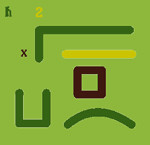 Unique Shapes: Swirls, sleighs, rooftops, U/rabbit ears 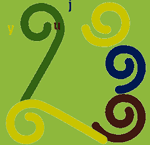 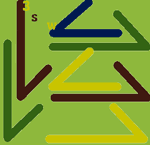 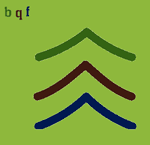  Generation 2(January 2010-January 2012)Overall Appearance: Thin lines with flat ends and rounded corners  Unique Shapes: Hollow circles, filled circles, crescents, sharp angles, tilde, triangles, "E"s, "M"s, "X"s 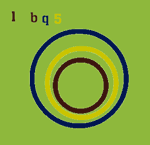 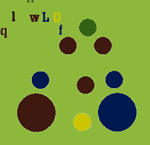 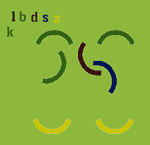 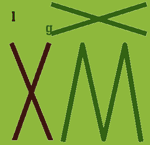  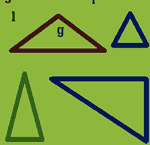 Generation 3(January 2012-March 2014)Overall Appearance: Similar to Gen1; thicker lines, rounded edges - with the addition of tapering Unique Shapes: Wishbones, "V"s, horseshoes, half circles, teardrops, cause ribbons, eyes, "T"s Generation 4(March 2014 - April 2017)Overall Appearance: Similar to Gen1; thicker lines, rounded edges Unique Shapes: Seeds/stones, chairs, "Y"s, noses, square swirls, bowls, stalagmites (idk what to call these??) Generation 5(April 20, 2017 - Present)Overall Appearance: "Organic," "Script" - first generation to show line width variation/tapered ends Unique Shapes:  (click to enlarge) "True" Names, and How to Find Them Unplugged has written an excellent piece on the initial discovery of "true" names, on which much of this section is based, here - be sure to check it out! A "true" name is simply the code used in the game and server to identify the unique glyph combination of each pictogram. Each glyph has a different letter or number which codes for the correct shape and position. There are 15 possible glyphs in each of the 4 glyph positions, which makes a total of 50,625 possible unique pictograms. If you would like to see the individual glyphs, take a look at the Pictogram Building blog. The letters in a "true" name are either upper or lower case. Unlike a pictogram link, the "true" name is not case sensitive. However, it is technically incorrect to use only upper or only lower case letters, and the alphabet plays a large role in which numbers or letters are possible in which glyph slots. In the creation of the pictogram system, the glyphs were first labeled with capital letters in groups of 15: Glyph 1: ABCDEFGHIJKLMNO Glyph 2: PQRSTUVWXYZ Since there are only 26 letters, the remaining 4 slots had to be filled something else. The alphabet was started again, this time in lower case, with 15 slots to each glyph: Glyph 2: abcd Glyph 3: efghijklmnopqrs Glyph 4: tuvwxyz Now that there are no more upper or lower case letters, numbers are used for the remaining 8 slots: Glyph 4: 01234567 This system is the same for all pictograms. So how does the game tell the difference between a first generation pictogram and a fourth generation pictogram? Easy: It adds a generation identifier to the front of the "true" name code. First Generation: No number is added Second Generation: 1 Third Generation: 2 Fourth Generation: 3 Fifth Generation: 4 As you can see, since the first generation pictograms did not have this identifier, the generation numbers are off by 1. You can easily identify a pictogram's generation by looking at the identifier and subtracting 1 from it (or, in the case of Gen1, just noting that there is no identifier). The URL and flash file used to generate a "true" name will also have a generation number (of the correct value) to tell the code which file it needs to use to create the pictogram, or "word". First Generation: symbol.swf Second Generation: symbol2.swf Third Generation: symbol3.swf Fourth Generation: symbol4.swf Fifth Generation: symbol5.swf To find your pictogram's "true" name, you can either:
OR
Exceptions: Clones, Look-Alikes, and Impossibilities This section is incomplete. (Pictograms with the same "True Name") Stately and Stately2 (thread) Bingtis and Broken_Side (blog) Taavik and Ruptail (blog) Faur and SATGM (blog) Chirpy and Chirpy2 (blog) NightVoice and NightCall (See post by EternalQueen) Durr1 and Durr2 (See post by EternalQueen) Lala1 and Lala2 (See post by EternalQueen) RikkaxAkule22 and Pomegranites (See post by Mis) http://www.endlessforest.org/community/Ouro http://www.endlessforest.org/community/Bouros (chanced upon these on the map) arme and chaoslavawolf (Chanced upon on the map) (Pictograms with a 1 glyph difference in which the two glyphs that are different are very similar or hidden behind the other glyphs) Wudiin and WudiinClone Talvi and Naryae Coldforged and Chopin (Pictograms with no "True Name") Curiosity Awkward (not on TEFc) sralker (not on TEFc) ggf103 (Pictograms that can't quite be explained) Karegar This 1st gen pictogram rotates on the map. A screenshot in the user's icon shows a clear pictogram, however, as does a drawing the player has done. By looking at the source code on the pictogram's display page, we can see the code AIGp. This is interesting because no "I" glyph exists in the second slot's options. Instead, this pictogram is displaying TWO first glyphs - the "A" and the "I" - and NO fourth glyph. No idea how it glitched like this. It shouldn't even be possible. Adolff Another 1st gen pictogram which rotates on the map and should not be possible. It also shows as a "normal" pictogram in the Forest and is made by having multiple glyphs from the same slot. The code Cuv5 comes up for this pictogram. Although the pictogram page linked above shows a swirl, which is the "u" from the 2nd glyph set, the pictogram that shows in-Forest is made from the "c" of the 1st set and the "u," "v," and "5" glyphs all come from the 4th set -- so this pictogram has no 2nd or 3rd glyph set! It looks like a capital "I" when seen in the Forest. furadeer A 2nd generation pictogram which rotates on the map. Haven't seen what it looks like in-game. Happercze A 3rd generation rotating pictogram. Pictogram Continuity: Player Worldbuilding, Lore, and Creativity This section is woefully incomplete. If you have your own headcanon/lore to add, please leave a note in the comments! I'd also love to link to the original sources of some of these thoughts, as I recall reading a number of theories but cannot recall where. Tale of Tales wrote: Deer don't talk. Humans do. Especially in online games. And they make a mess of it. Slang and internet shorthand quickly destroy any illusion that the authors had crafted. No such thing in The Endless Forest. Deer don't talk. This is why your name is not a word[, but] a pictogram. A pictogram in an invented language of which nobody knows the pronunciation. When Tale of Tales set out to create the Forest, they wanted to create a world with its own narrative that would become apparent through - and created with - gameplay. Aside from being one way the creators removed the element of text from the game, part of that narrative is provided in the form of pictograms. The real and true meaning of the pictograms may be an abstract thought only the creators truly know, but that doesn't stop players from adding their own pieces of lore to the Forest's living narrative.
|
